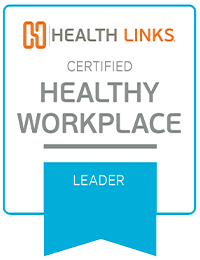
Health Links (HL): Why is the health and wellness of your employees important to you?
USAA: USAA is committed to serving our members and the only way we can do that is if our employees are in peak condition. The goal is to maximize the health and the quality of life for our employees and their families so we can better serve our members. We think of our employees like fixed assets that we need to invest in as opposed to just variable assets that quickly turnover.
HL: How will you/do you know your program is successful?
USAA: It’s very important to be able to measure our wellness program, so from the very beginning we’ve had a benefits data warehouse to track the success of individuals and the success of the program as a whole. We track four main outcomes to determine the success of our program. We record personal anecdotes about individual successes so that executives can see the personal impact our program has on employees. We track participation in the program so we know how many employees are engaged. We track changes in risk factors as well, because they are leading indicators of how well we’re doing and we collect this data from health risk assessments and from our biometric screenings. BMI is a main risk factor we look at and we’ve noticed that our population BMI has decreased over the past 5 years, which is not an easy feat to accomplish. Lastly, we track the growth rate of our spending. Not only do we track what we spend in health care, but also what we spend in disability and workers compensation. Our trend is currently about 4% below national average levels for large, self-insured employers.
HL: What obstacles did you have to overcome to get your program started? How did you overcome them?
USAA: We had the good fortune of having a very frank conversation with senior staff in which we discussed how hard it is to show return on investment from wellness programs and that it would be very likely no financial returns would be seen for 3-5 years. This was helpful so that they were aware of the timeframe for which outcomes would be seen. Patience was key and also the data warehouse was essential for getting the information we wanted them to see in regards to success. One obstacle was the size of our company and so it’s very difficult to change the way we do things. There are many people involved in this effort and the collaboration between these partners is integral. It has taken a while to get our internal and external partners on the same page but once we did that, progress was quickly made. An example of a behavior change we’ve seen despite our size is employees choosing healthier beverages from vending machines. We lowered the price of healthy beverage choices by 25 cents and moved them to eye level and we saw a huge change in the choices people were making.
HL: Do you incorporate safety along with your wellness program? If so, what does this look like?
USAA: We need our employees at work and if they’re unable to work, we need them back as fast as possible. All of our programs promote the idea of primary prevention. There previously was not a safety culture here and since we are classified as a “white collar”, our biggest safety concerns were ergonomic injuries and slips, trips and falls. We built the safety culture after the wellness culture was established and we branded it along with the wellness program to make it better known. We started to do proactive ergonomic workstation evaluations all around our enterprise and from that process, we learned that the more proactive evaluations we did, the less ergonomic injuries we had. We’ve decreased our overall workers comp by 80% in a 10 year period.
HL: What tip/advice would you give to a business that is considering starting a workplace wellness program?
USAA: Find other businesses through coalitions and business health groups to find help and to gather ideas for your own program. There is a ton of information out there, local and otherwise, and people are very willing to help. Small employers can be daunted when they look at the programs of large businesses so a really important thing to do is just to start doing something, whatever that may look like for your business. That first little bit that you do has a huge return. Senior level support is also very important for that impact on the health and wellness culture. Doing small things such as price differentials on soda machines, having healthier snacks at meetings and gatherings, or having a walking program go a long way. Sustainability is also very important so tracking data and evaluation results will help create a sustainable program that people will want to participate in. Finding out the important ailments and diseases in your employee population is essential to creating programming specific to your employees, and you should ask your Health Plan to provide this population level data so you can get started.